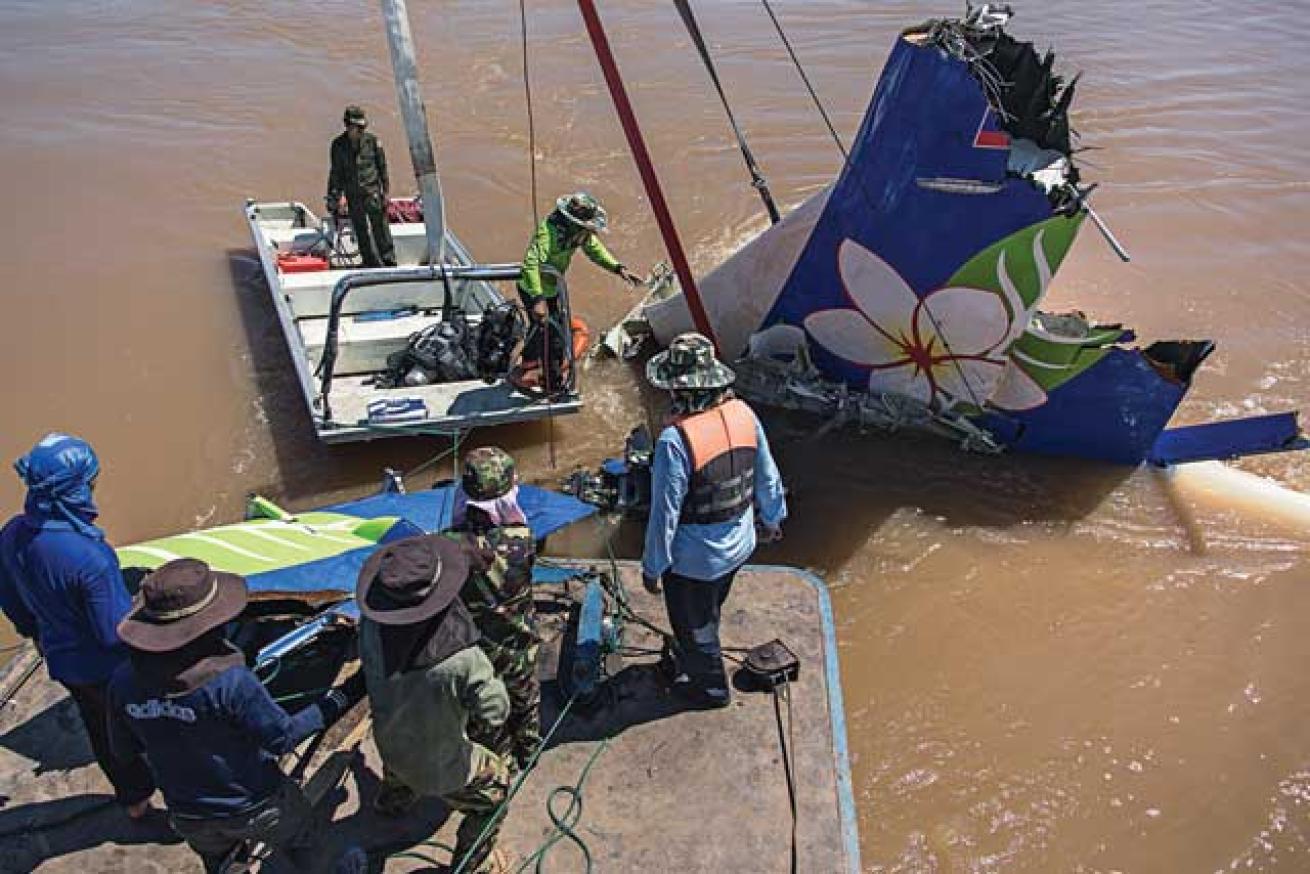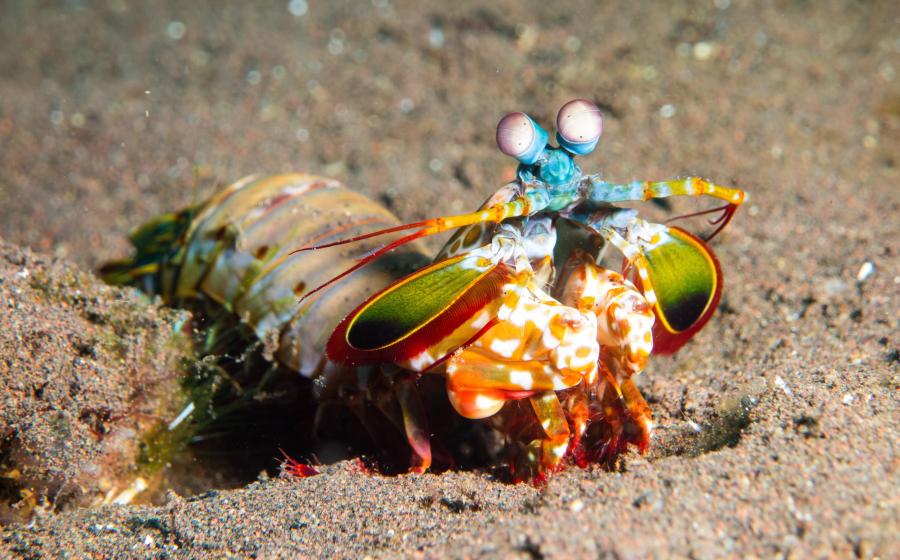What It's Like: To Recover Plane Crash Victims

Back Above the Surface
Part of the plane that houses the data recorder is raised from the Mekong
Jennifer Meszaros
Three days after Lao Airlines Flight QV301 crashed into the Mekong River in Laos, killing all 49 people aboard, I found myself sandwiched between high-ranking government officials, recording the salvage from a makeshift barge in the middle of the river. My partner, Gabriele Stoia, and I had hitched a ride on a communist military police boat that brought us to the scene of the accident.
Gabry and I are not salvage experts; rather, we are ethnographers. We had come to record the endeavors of the 11 divers who risked their lives for an event that had been forgotten as quickly as it had occurred.
The crew worked arduously for 14 consecutive days to salvage the wreckage and recover the victims. There was a 5-knot current running, viz was zero, and the divers had to dodge huge amounts of floating debris. Every day we witnessed unimaginable and often dangerous conditions for the divers.
A local Laotian diver, Bounmixay Khanthayonngthong, led a salvage crew of 10 to recover the wreckage and retrieve the victims.
“We’ve never before dived in these circumstances,” Khanthayonngthong said. “We’re mechanics and welders at the hydroelectrical dam. We have zero salvage experience, and we are without proper equipment. Every day we risk our lives.”
The team searched a radius of more than 600 feet, using sonar and acoustical locating equipment in 25 to 40 feet of water, feeling with their hands and feet to find victims and parts of the wreckage.
The salvage operation was painfully slow. “We used rocks for anchors and buckets for buoys, and we measured parts of the wreckage with ropes,” Khanthayonngthong said. “We had to share our equipment and take turns diving in pairs.”
The divers successfully recovered a 32-foot section of the fuselage, a starboard wing, two engines, a horizontal stabilizer, the tail assembly and two flight recorders. The crew also recovered 47 of the victims.

Jennifer MeszarosPart of the plane that houses the data recorder is raised from the Mekong
Three days after Lao Airlines Flight QV301 crashed into the Mekong River in Laos, killing all 49 people aboard, I found myself sandwiched between high-ranking government officials, recording the salvage from a makeshift barge in the middle of the river. My partner, Gabriele Stoia, and I had hitched a ride on a communist military police boat that brought us to the scene of the accident.
Gabry and I are not salvage experts; rather, we are ethnographers. We had come to record the endeavors of the 11 divers who risked their lives for an event that had been forgotten as quickly as it had occurred.
The crew worked arduously for 14 consecutive days to salvage the wreckage and recover the victims. There was a 5-knot current running, viz was zero, and the divers had to dodge huge amounts of floating debris. Every day we witnessed unimaginable and often dangerous conditions for the divers.
A local Laotian diver, Bounmixay Khanthayonngthong, led a salvage crew of 10 to recover the wreckage and retrieve the victims.
“We’ve never before dived in these circumstances,” Khanthayonngthong said. “We’re mechanics and welders at the hydroelectrical dam. We have zero salvage experience, and we are without proper equipment. Every day we risk our lives.”
The team searched a radius of more than 600 feet, using sonar and acoustical locating equipment in 25 to 40 feet of water, feeling with their hands and feet to find victims and parts of the wreckage.
The salvage operation was painfully slow. “We used rocks for anchors and buckets for buoys, and we measured parts of the wreckage with ropes,” Khanthayonngthong said. “We had to share our equipment and take turns diving in pairs.”
The divers successfully recovered a 32-foot section of the fuselage, a starboard wing, two engines, a horizontal stabilizer, the tail assembly and two flight recorders. The crew also recovered 47 of the victims.










